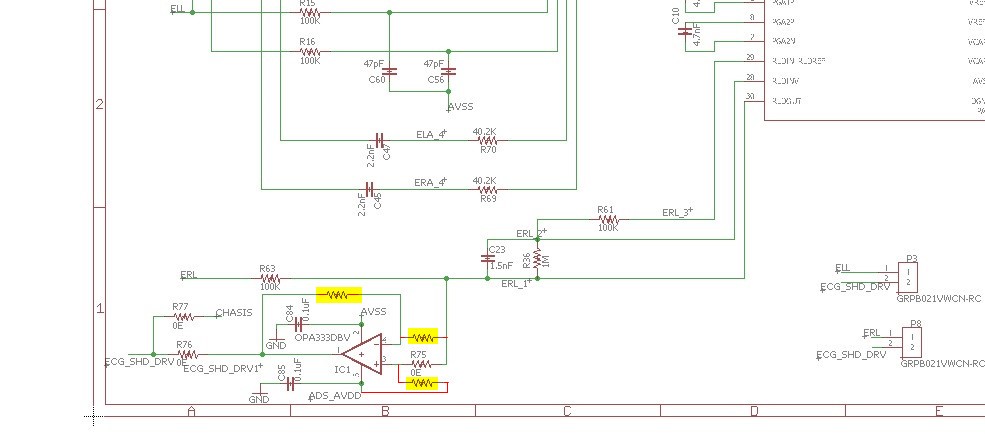Hello,
I am designing a ECG Front-End board based on ADS1292R chip and I would like to add the "Shield Driver". This is NI (Not Installed) in the Reference Design (slau384a) from Texas Instruments.
In other thread of E2E forum this topic was discussed and in the last post, a circuit based on opa 333 operational amplifier was proposed. The post shows the resistors that can be added to configure the amplifier as inverter or non-inverter. I attached the circuit. (e2e.ti.com/.../584828)
My questions are the following:
1. When does the amplifier should work as an inverter and when as non-inverter?
2. When the amplifier is configured as an inverter. Why the (+) amplifier's input is connected to the resistor and this is connected to ADS_AVDD? I don't understand this part of the circuit. I think that the output can be saturated.
Thanks
Julio


